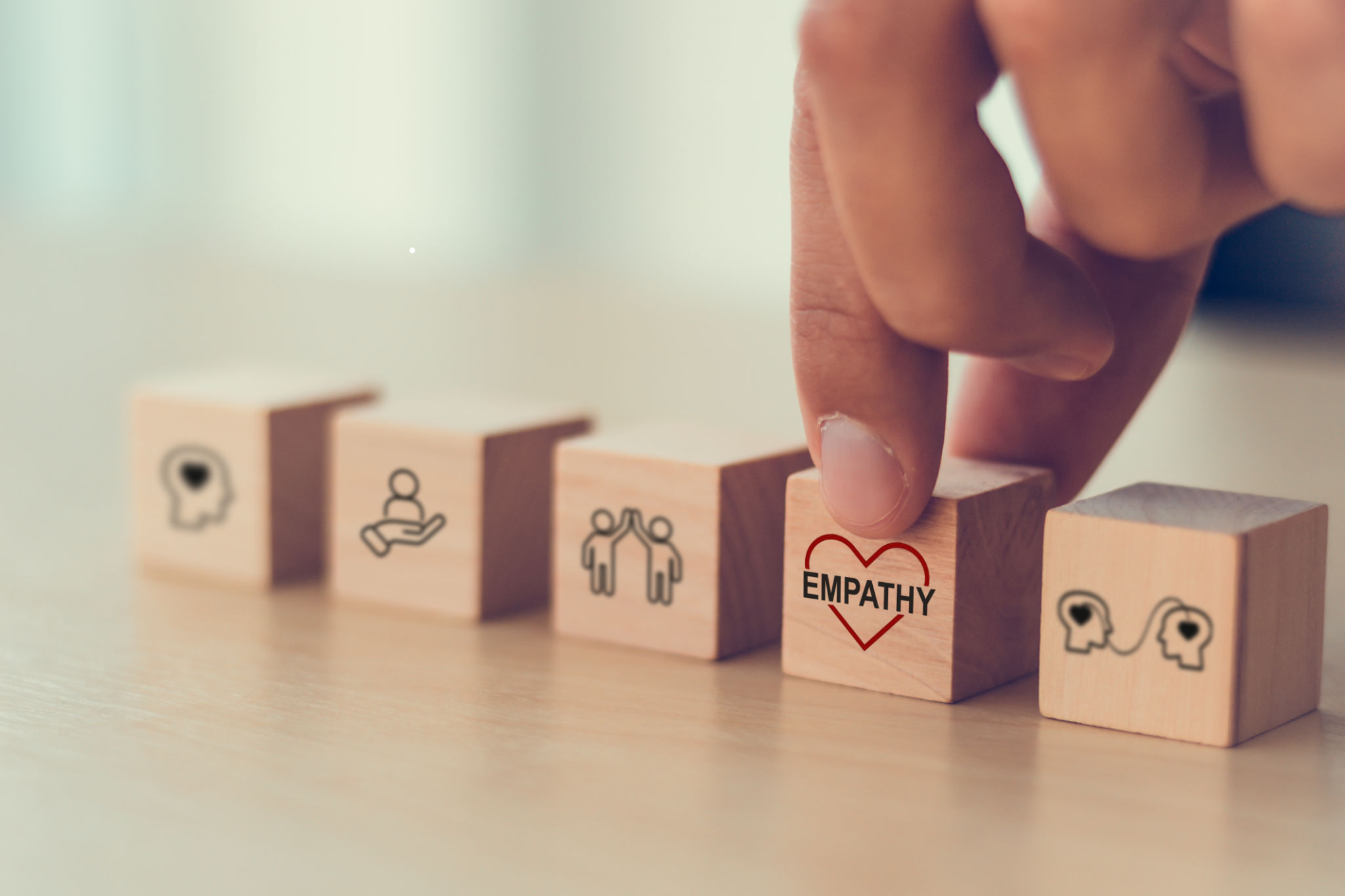The Digital Elephant in the Room: How We've Collectively Ignored Profound Social Changes in the Internet Age
As a xennial, that micro-generation caught between Generation X and Millennials, I have a unique vantage point. I remember life before the internet became ubiquitous. I recall the static of dial-up connections and the novelty of my first cell phone that could only make calls. I've witnessed the before and after of one of humanity's most significant technological revolutions. Yet as I look around at our current society, I'm struck by our collective unwillingness to acknowledge how profoundly these technologies have altered our social fabric.
The Psychology of Mass Denial
Before delving into specific cultural shifts, it's important to understand the psychological mechanisms that allow us to ignore what's right in front of us.
Collective denial occurs when a group of people simultaneously refuse to acknowledge or address an obvious truth or reality. It's a form of cognitive dissonance at a societal level, we see the evidence but choose not to process it or its implications. Researchers at Stanford University have documented how collective denial functions as a social defense mechanism, protecting groups from uncomfortable realities that might otherwise demand difficult changes or painful acknowledgments.
Pluralistic ignorance, a related phenomenon, happens when individuals privately reject a norm or belief but publicly uphold it because they incorrectly assume the majority accepts it. In a 2018 study published in the Journal of Consumer Research, researchers found that many people privately felt uncomfortable with constant smartphone usage but maintained the behavior because they believed others approved of it.
We often refer to unaddressed issues as the elephant in the room, enormous, obvious problems that nobody wants to discuss. With digital technology, this elephant has grown so large and become so integrated into our daily experiences that we can hardly see it anymore; it's become the room itself.
Normalcy bias leads us to underestimate both the possibility and impact of significant deviations from normal patterns. This cognitive bias helps explain why many of us downplay how fundamentally different our communication patterns have become, even when shown evidence of the shift.
Finally, willful blindness describes our tendency to intentionally avoid information that might be uncomfortable or inconvenient. As Margaret Heffernan explored in her book "Willful Blindness: Why We Ignore the Obvious at Our Peril," this selective attention helps us avoid responsibility and the obligation to act on what we know.
Armed with these concepts, we can better understand our curious relationship with digital technology, how we've allowed it to radically reshape our social lives while barely acknowledging the transformation.

The Conversation Collapse
I remember lengthy phone calls in my teenage years, the cord stretched to its limit as I sought privacy from family members. Conversations would meander organically for hours, touching on topics profound and trivial alike. There was a rhythm to these exchanges—the pauses, the excited interruptions, the comfortable silences—that fostered connection.
Today, research confirms what many of us intuitively feel: conversations are becoming shorter and more fragmented. A 2019 study published in the Journal of Communication analyzed over 50,000 face-to-face conversations and found that the average duration has decreased by approximately 25% over the past two decades.
Text messages have replaced many of these conversations with brief, functional exchanges. The average text message is just seven words long, according to data from mobile carriers. We've developed a new language of abbreviations, emojis, and shorthand that prioritizes efficiency over expression.
This shift toward brevity isn't limited to casual conversations. Business meetings now often follow the "stand-up" model pioneered in tech companies, designed to be brief and focused solely on essential information. Even romantic relationships have been affected; dating app conversations average just 12 exchanges before either dying out or transitioning to an in-person meeting, according to research from the dating app Hinge.
What's particularly striking is how little we discuss these changes. We've collectively adapted to this new conversational landscape without questioning what might be lost in the transition. The richness of language, the spontaneity of unexpected conversational detours, the comfort of simply being present with another person without agenda or time constraint—these have faded gradually, like photographs left too long in sunlight.
The Incredible Shrinking Vocabulary
Language itself has undergone a transformation in the digital age. Research published in the Proceedings of the National Academy of Sciences indicates that our active vocabulary, the words we regularly use in conversation and writing, has contracted over the past three decades, even as our passive vocabulary (words we recognize but don't use) has expanded due to increased reading opportunities online.
This vocabulary contraction is particularly evident in the diminishing use of adjectives and adverbs in everyday speech. Linguists at Lancaster University analyzed millions of words of transcribed conversation and found a 43% decrease in adverb usage and a 31% decrease in descriptive adjectives since 1997.
The causes are multifaceted. The constraints of text messaging and character limits on platforms like Twitter (now X) have trained us to economize our language. The rise of emoji has provided an alternative system for adding emotional color to communication. The acceleration of our information environment has left less time for linguistic flourishes.
But perhaps most significantly, the visual nature of digital communication has reduced our reliance on descriptive language. Why describe a sunset when you can share a photo? Why explain how you're feeling when there's a perfect gif or meme that captures the emotion?
The cultural implications of this linguistic contraction are profound. Research in cognitive linguistics suggests that language shapes thought, when we lose words, we may also lose some capacity for nuanced thinking. The subtleties of emotion and experience that were once captured in rich verbal description are increasingly flattened into standardized visual shorthand.
Yet this massive shift in how we express ourselves remains largely undiscussed. We've collectively accepted a less verbally expressive culture without questioning what capabilities we might be atrophying in the process.

The Attention Fragmentation
Perhaps the most fundamental change in our cognitive landscape is the fragmentation of attention. The average American checks their phone 96 times per day, approximately once every 10 minutes of waking life, according to research from Asurion, a global tech care company.
This constant switching of attention has neurological consequences. Studies using functional MRI have shown that frequent media multitasking correlates with reduced gray matter density in the anterior cingulate cortex, a brain region important for attention and emotional control.
The impact on our social interactions is equally significant. A 2021 study published in the Journal of Social and Personal Relationships found that the mere presence of phones during conversations reduced participants' reported sense of connection, empathy, and conversation satisfaction, even when the phones weren't being actively used.
This phenomenon of "absent presence", being physically present but mentally elsewhere, has become so commonplace that we barely register it anymore. We accept conversational partners who periodically disengage to check notifications. We've normalized the subtle anxiety of wondering whether we're interesting enough to compete with whatever might be happening on someone's phone.
What's remarkable is how quickly society has adapted to this new normal of fragmented attention without openly discussing its implications. We've developed a collective tolerance for partial presence that would have seemed bizarre or even rude just two decades ago.
The Depth Deficit
As conversation durations shorten and attention fragments, we've witnessed a corresponding decline in conversational depth. Surface-level exchanges have always been part of social life, but they were traditionally balanced with deeper connections. Today, research suggests that the balance has shifted dramatically.
A longitudinal study conducted by sociologists at Duke University tracked the frequency and depth of social interactions from 1985 to 2020. They found that while the overall number of social interactions has increased due to digital platforms, the proportion classified as "substantive conversations" (defined as meaningful exchanges involving personal disclosure and engaged listening) has declined by nearly 40%.
This decline in conversational depth correlates with concerning trends in mental health. The sense of being known and understood by others—which typically requires sustained, attentive interaction—is consistently linked to psychological wellbeing in research. As MIT sociologist Sherry Turkle observed in her book "Reclaiming Conversation," we're increasingly "connected, but alone."
What makes this particularly troubling is that many of us recognize this deficit privately but feel powerless to address it. In interviews conducted for Turkle's research, subjects frequently expressed nostalgia for deeper conversations but felt that requesting undivided attention had become socially awkward or unreasonable in today's environment.

The Empathy Erosion
Empathy, our ability to understand and share the feelings of others, depends heavily on attention and presence. We need to notice subtle facial expressions, register changes in tone, and maintain focus on another's narrative to truly understand their experience.
Concerning research suggests that empathy may be declining in the digital age. A meta-analysis of studies on empathy among American college students between 1979 and 2009 found a 40% decrease in this crucial social capacity, with the steepest decline occurring after 2000.
Some researchers have linked this decline to increased digital media consumption. Screen-based interactions lack many of the cues that trigger empathic responses. Text-based communication strips away tone, facial expressions, and body language. Even video calls present a flattened version of human presence, with eye contact impossible due to camera placement and many subtle cues lost in digital transmission.
Moreover, the culture of rapid response encouraged by digital platforms may be training us to react rather than listen. We compose replies while others are still speaking. We scan messages quickly for the main point rather than absorbing the full context and emotional content.
The social consequences of diminished empathy are far-reaching. From increased polarization in political discourse to rising workplace conflict, many contemporary social problems may be exacerbated by our decreasing capacity to understand perspectives different from our own.
The Conversation Commercialization
Another profound shift that has received insufficient attention is the commercialization of our conversational spaces. Private conversation was once largely beyond the reach of commercial interests. Today, our digital conversations generate data that is captured, analyzed, and monetized.
This commercial intrusion affects our communication in subtle but important ways. We're increasingly aware of being "overheard" by algorithms, leading to self-censorship and performance. Research published in the Journal of Computer-Mediated Communication found that awareness of digital surveillance led to significant changes in communication patterns, including less disclosure of personal information and greater use of impression management strategies.
The design of digital communication platforms also shapes our interactions in ways optimized for commercial rather than social value. Features that increase engagement, like notifications, read receipts, and algorithmic content sorting, are carefully engineered to maximize time spent and data generated, not to facilitate meaningful connection.
Even the emotional tone of our interactions is subject to commercial influence. The reaction options available on social platforms constrain how we express sentiment, channeling complex emotional responses into standardized categories that can be easily quantified and analyzed.
We've accepted this commercialization of conversation so completely that we rarely question it. The idea that private communication should generate profit for third parties would have seemed bizarre just a generation ago; today, it's the unquestioned foundation of our digital social lives.

Breaking the Silence
As a xennial who has witnessed this transformation, I find myself increasingly unwilling to participate in our collective denial. The changes to our social fabric are too significant to ignore, and the potential long-term consequences too profound.
The first step toward addressing any form of collective denial is simply naming what we see. We need open, honest conversations about how digital technology has transformed our relationships, attention, language, and social norms. Not to demonize technology or indulge in nostalgia, but to make conscious choices about how we want to live and connect.
Some promising research suggests that awareness alone can mitigate some negative effects. A study published in the Journal of Social Psychology found that simply educating participants about the impact of phone presence on conversation quality led to significant behavioral changes and improved connection in subsequent interactions.
There are also emerging social movements aimed at reclaiming deeper forms of connection. The "slow communication" movement advocates for more intentional use of digital tools. Digital wellness initiatives promote tech-life balance. And some communities are experimenting with communication norms that protect space for uninterrupted, present interaction.
As individuals, we can start by bringing awareness to our own communication patterns. How often do we choose convenience over depth? How frequently do we allow our attention to fragment during conversations? When did we last engage in a lengthy, meandering discussion without digital interruption?
We might also consider creating clear boundaries around technology use in our relationships. Research consistently shows that explicit agreements about phone use during shared time lead to greater relationship satisfaction than implicit assumptions or unspoken resentments.
Conclusion: Reclaiming Conscious Connection
The technologies that have transformed our communication landscape aren't going away, nor should they. Digital tools have brought remarkable benefits, connecting distant loved ones, democratizing information access, creating new forms of expression and community.
But our relationship with these tools needs to become more conscious and intentional. We've allowed profound changes to our social fabric to occur without sufficient reflection or deliberate choice. We've accepted a new normal of abbreviated communication, fragmented attention, and commercialized connection without questioning what we might be losing in the process.
As a generation that bridges the pre-digital and digital worlds, xennials have a unique perspective to offer in this conversation. We remember what was while being fully immersed in what is. We can help name the elephant in the room, the massive transformations that have occurred while we collectively looked away.
By breaking our silence about these changes, we create space for more intentional choices. We can integrate digital tools in ways that enhance rather than diminish our humanity. We can preserve the depth, presence, and richness that make human connection so valuable. We can reclaim conversation as a space for genuine meeting rather than efficient information exchange.
The first step is simply acknowledging what we all know but rarely say: something profound has changed in how we relate to one another, and it's time we talked about it. Really talked about it, with the depth, attention, and presence that make us human.
